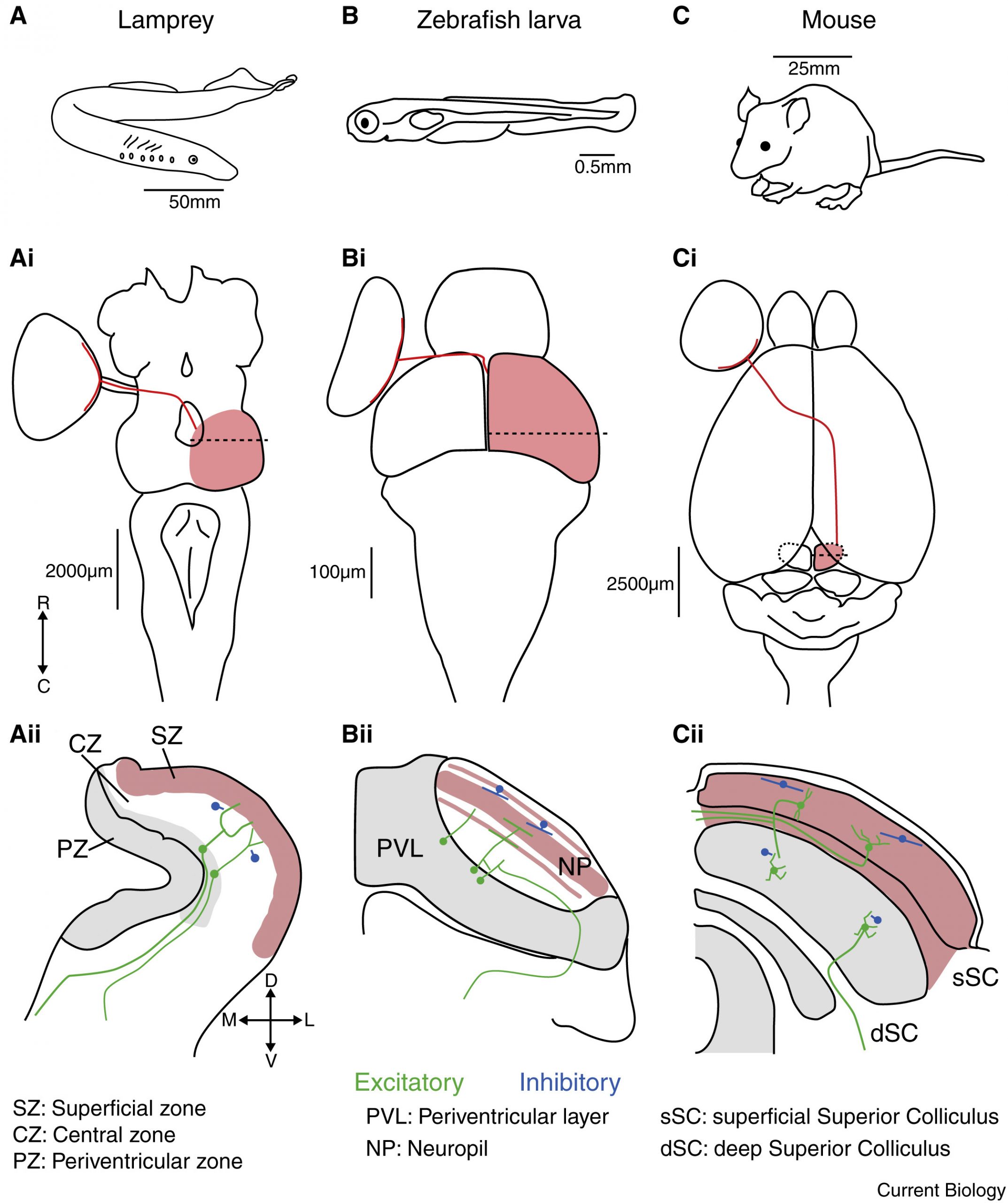News
June 11, 2021
Review: The tectum/superior colliculus as the vertebrate solution for spatial sensory integration and action

Positions, sizes, and retinal inputs to the tectum/SC in lampreys, zebrafish larvae, and mice.
(A) The lamprey (Lampetra fluviatilis). (Ai) Dorsal view of a lamprey brain. Retinal ganglion cell projections (red line) from the left eye cross the optic chiasm to enter the right tectum (red shading). The dashed line represents the position of the coronal section displayed in (Aii). Major divisions are based on Butler and Hodos. The red shaded region represents the layers that receive retinal input. The gray shaded area represents regions with a high density of neuronal somae. Local inhibitory interneurons are represented in blue. Ipsilateral and contralateral glutamatergic projecting neurons are represented in green. The same features are shown for larval zebrafish (B–Bii) and mouse (C–Cii). R, rostral; C, caudal; D, dorsal; V, ventral; M, medial; L, lateral.
A review paper by ASHBi Vice Director/PI Dr Tadashi Isa was published online in Current Biology on June 7, 2021.
Abstract
The superior colliculus, or tectum in the case of non-mammalian vertebrates, is a part of the brain that registers events in the surrounding space, often through vision and hearing, but also through electrosensation, infrared detection, and other sensory modalities in diverse vertebrate lineages. This information is used to form maps of the surrounding space and the positions of different salient stimuli in relation to the individual. The sensory maps are arranged in layers with visual input in the uppermost layer, other senses in deeper positions, and a spatially aligned motor map in the deepest layer. Here, we will review the organization and intrinsic function of the tectum/superior colliculus and the information that is processed within tectal circuits. We will also discuss tectal/superior colliculus outputs that are conveyed directly to downstream motor circuits or via the thalamus to cortical areas to control various aspects of behavior. The tectum/superior colliculus is evolutionarily conserved among all vertebrates, but tailored to the sensory specialties of each lineage, and its roles have shifted with the emergence of the cerebral cortex in mammals. We will illustrate both the conserved and divergent properties of the tectum/superior colliculus through vertebrate evolution by comparing tectal processing in lampreys belonging to the oldest group of extant vertebrates, larval zebrafish, rodents, and other vertebrates including primates.
